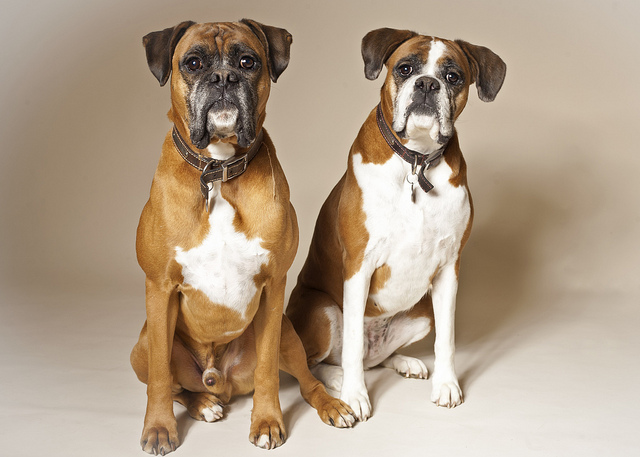 It’s that time of year when many of us travel over the holidays to be with family and friends. If you normally board your dog or hire a pet sitter, why not consider taking him along this year to celebrate the holidays with you? Traveling with a dog is easier than it used to be. From finding pet friendly hotels and restaurants to locating dog parks and veterinarians, there are several apps and websites that can make a holiday road trip with your dog a walk in the (dog) park.
It’s that time of year when many of us travel over the holidays to be with family and friends. If you normally board your dog or hire a pet sitter, why not consider taking him along this year to celebrate the holidays with you? Traveling with a dog is easier than it used to be. From finding pet friendly hotels and restaurants to locating dog parks and veterinarians, there are several apps and websites that can make a holiday road trip with your dog a walk in the (dog) park.
I’m often amazed at how easy it is to travel with Haley, but I realize many dogs aren’t crazy about extended car rides. Although they enjoy a change of scenery, the change in routine can sometimes leave our pups a bit stressed. Use the planning, packing and travel tips below to make sure your road trip proceeds without a hitch!
Preparing for Your Road Trip
The Packing List
I have to admit, I like to keep it simple and I’m not one of those people who like to pack for every possible scenario unless we’re vacationing on a remote island or similar location. I especially hate carrying all kinds of puppy paraphernalia into a hotel for an overnight while on the road, so this is a must-have list.Dog Food – A dog’s gotta eat, right? Pack a little more than what your dog normally would eat in case your plans change and extra food is needed.
Water – Take enough water for on the road and extra water if you’re traveling in remote locations.
Food and Water Bowls – A bowl with a water-tight lid is ideal for car travel. Collapsible bowls are convenient for packing and for use at your destination.
Collar with ID Tag – Make sure your cell phone number (or current contact information) is specified on the ID tag. Use a waterproof marker and tape to makes changes if necessary.
Leashes/Harness – It’s a good idea to have more than one leash. Leave one in the car so it’s always available for use while on the road. A long leash is handy when your dog can have a little more freedom and a short leash is perfect for mingling through crowds or when you need to keep him close to you.
Night Light – Clip-on LED lights are ideal for making sure you’re visible when walking with your dog at night or locating your dog outside after dark.
Crate – Portable crates are nice to have when traveling. Many are lightweight, easy to setup and don’t take up a lot room when collapsed.
Crate Padding or Bed – Every dog likes a comfortable place to lay their head and a pad or bed that fits inside the crate can save on packing space.
Toys/Bones – Pack several of your dog’s favorite toys and a bone or two. Treat balls can double as toys and food dispensers.
Treats – Treats are especially useful for coaxing your dog to cooperate when you ask him to do things he’s not used to doing while on the road. Reward him for being a good traveler.
Blanket or Seat Cover – A thick quilt or heavy blanket will protect your car seats from getting scratched or dirty and will protect your dog from being burned by hot seats in the summer. Blankets can also be used to cover valuables in the car.
Towels – Absorbent microfiber towels are great for drying a wet dog or cleaning up spills. They’re lightweight and easy to pack.
Poop Bags – Take plenty of bags and keep an extra roll in your glove box.
License and Vaccination Record – You may be asked to provide these, especially if you need to board your dog in case of an emergency.
Grooming Supplies – Combs, brushes and any supplies required for regular grooming.
Paper Towels/Dog Wipes – Good for quick and easy clean-ups.
Medicine – Remember to take along any supplements, medicines and other supplies your dog may need (flea/tick treatment, worming medicine, allergy pills, sunscreen, etc.)
Picture of Your Dog – If your dog gets lost, you’ll have a picture for printing flyers to help identify him.
Dog Travel Bag – You’ll need a bag to store all these supplies while on the road. Specialty dog bags, beach bags or diaper bags are roomy and have plenty of pockets and compartments to keep things organized and you’ll have all your dog’s supplies together in one easy to carry bag.
Tips for the Road
Tips for Hotel Stays
Tips for Houseguests
With all the hustle, bustle and merrymaking around the holidays, it’s easy to forget that our dogs may need a little extra TLC. Travel, lack of adequate sleep and the change of environment is stressful and can make even the sweetest dog a bit cranky. Try to stick to your dog’s routine as much as possible and occasionally take a timeout from the festivities to relax or take a long walk together. If your dog seems overloaded by all the excitement, some quiet crate time can help him relax and get some well needed rest.
Going on a road trip with your dog requires a few sacrifices along the way, but there’s nothing like having your best friend beside you for the ride. Are you planning on traveling with your dog over the holidays? Share some of your helpful travel tips with us!

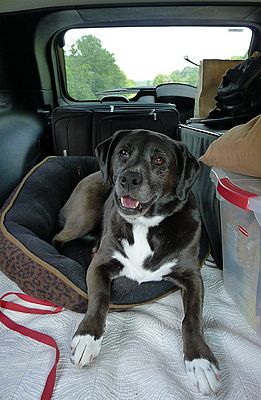
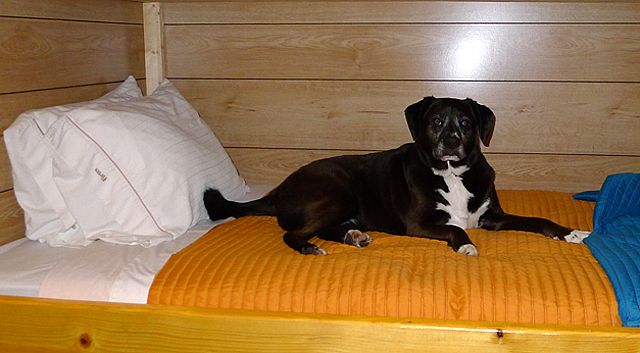
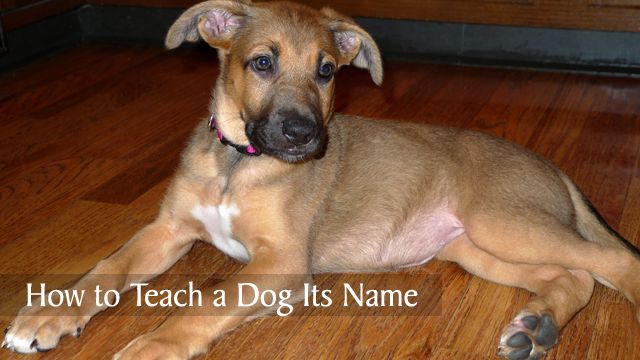 Does your new puppy ignore you when you call his name? Have you adopted a dog from a shelter or rescue and want to teach him a new name? Maybe you’ve had your dog for awhile and he seems to have selective hearing when you try to get his attention. Earlier this week I posted an article about how to
Does your new puppy ignore you when you call his name? Have you adopted a dog from a shelter or rescue and want to teach him a new name? Maybe you’ve had your dog for awhile and he seems to have selective hearing when you try to get his attention. Earlier this week I posted an article about how to 
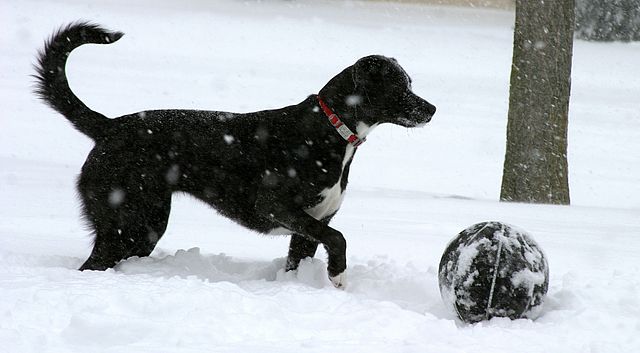 If you’re like me, you love the change of seasons, but it’s not always fun or convenient to find ways to exercise your dog in the winter, especially when the days are shorter and it gets dark earlier. For those of us that live in the northern United States, wintertime walks can be beautiful sometimes, but it’s usually all about cold fingers and toes, bitter wind in your face, slush covered dog bellies and trying to stay vertical on icy surfaces. It’s no wonder we sometimes skip the daily walk and stay inside by the fire with a hot cup of tea.
If you’re like me, you love the change of seasons, but it’s not always fun or convenient to find ways to exercise your dog in the winter, especially when the days are shorter and it gets dark earlier. For those of us that live in the northern United States, wintertime walks can be beautiful sometimes, but it’s usually all about cold fingers and toes, bitter wind in your face, slush covered dog bellies and trying to stay vertical on icy surfaces. It’s no wonder we sometimes skip the daily walk and stay inside by the fire with a hot cup of tea.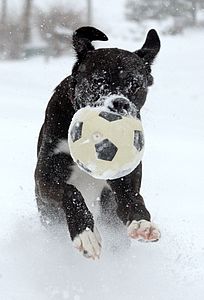 Prevent hypothermia and frostbite by watching your dog carefully for signs that they’ve had enough of the cold. If your dog is shivering, whining, slowing down or lifting their paws a lot, it’s time to head back inside and warm up. On those occasional winter days when it’s just too miserably cold for you to spend time outside, it’s probably too cold for your dog too. Stay inside by the fire and enjoy your hot tea.
Prevent hypothermia and frostbite by watching your dog carefully for signs that they’ve had enough of the cold. If your dog is shivering, whining, slowing down or lifting their paws a lot, it’s time to head back inside and warm up. On those occasional winter days when it’s just too miserably cold for you to spend time outside, it’s probably too cold for your dog too. Stay inside by the fire and enjoy your hot tea.